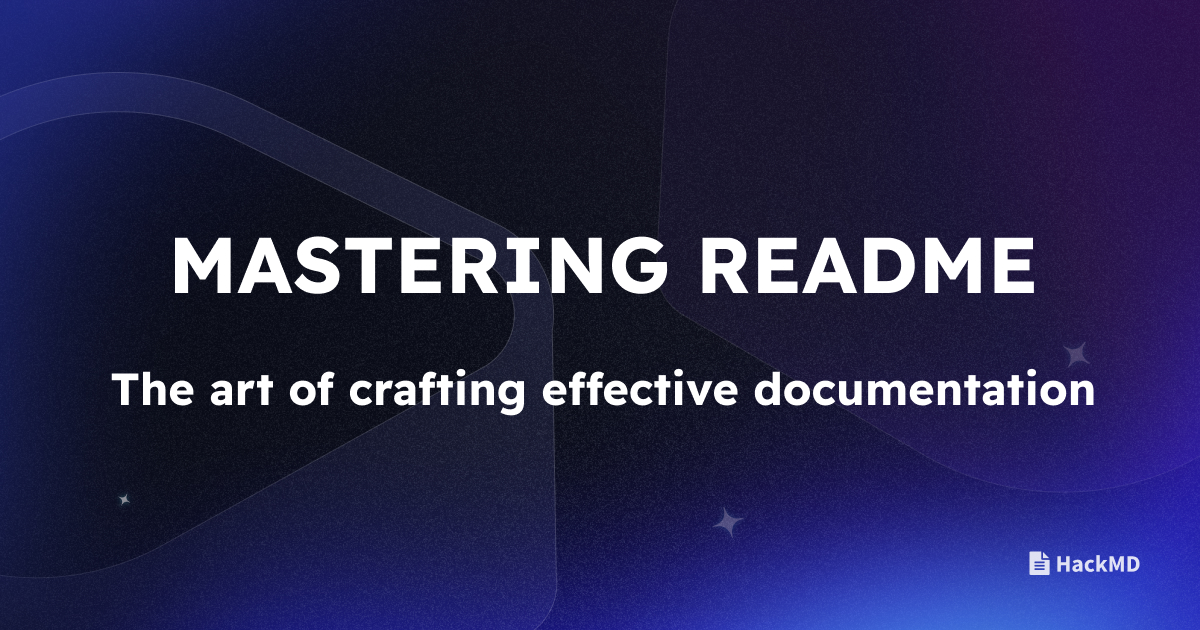Whether you’re a seasoned developer or new to the game, understanding the significance of a README document is pivotal for any project. It serves as a guide for users and collaborators alike, offering insights into your project’s functionalities, usage, and structure.
But knowing exactly what to include and understanding the nuances of crafting a clear and informative README can significantly boost your projects visibility and usability.
Today, we’re diving into just that. Learn all the essential components, best practices, and step-by-step strategies for creating a README that stands out.
Let’s get to it!
What is a README?
First things first.
A README file is text file (usually in markdown) that serves as an introductory guide or manual for users, developers, and collaborators of a project. It’s an entry point to understand the project and sets the tone.
So why should you write one?
A well-crafted README is vital for several reasons:
- Project Understanding: Helps others grasp the projects purpose and functionality.
- Onboarding made easy: Facilitates a seamless onboarding process.
- Encourages collaboration: Provides guidelines for contributors and clarifies expectations.
- Showcases strengths: Highlights the project’s advantages and strengths.
If you’re working on any programming project – especially one likely to involve external contributors – creating a README is crucial. Ideally, it should be created before the project begins. This acts as a North Star and eliminates the need for retroactive work.
Crafting an effective README document
1. Understand the purpose
This one is self explanatory, but an important component that will effect the rest of your document.
Before starting, you should understand the primary audience and objectives of your project. Who will interact with your README – developers, end-users, or both? What are the project’s goals and what does the README aim to achieve.
A good way to think about it? For a software project, your audience might include developers seeking usage guidelines, while the README’s objectives could involve defining the software’s purpose, along with clear guidance on installation and usage.
2. Structure and formatting
Once you’ve identified your audience and objectives, you’ll want to scope out the formatting and structure of the document itself.
What are the main points you want to cover in your README and how can you strcuture that information in the clearest, most concise way?
It may seem obvious, but effective (and consistent) use of headings, subheadings, bullet points, and formatting styles helps users quickly find the information they need.
If you have a large README file, it’s useful to create a table of contents at the top of your document. This will help your audience seamlessly move through the document and onboard quickly.
3. Content elements
Each section within your README must serve a clear purpose and layout all necessary information.
While some areas may seem self explanatory, you should create your README with the possibility that someone reading your document is a novice in the space and needs a little extra guidance. Integrating visual aids like diagrams, screenshots, or gifs complements textual context and offers a more comprehensive understanding.
The following sections are great starting points:
- Title and Description: Don’t skimp here! Provide a solid title and a detailed project description. What problem does your project solve? What makes it stand out? Why did you start this project? What are the challenges?
- How-to: Offer a step-by-step walkthrough of how to use the project, including any commands or configurations.
- Installation guide: If your audience needs to download your project first, give a detailed installation guide. This is also the area to add any specific context (re: specific operating system or other dependencies).
- Contribution guidelines: State here your project’s contribution policy, requirements, and onboarding steps.
- Roadmap: Document your long-term proejct vision, if applicable.
- Citation file: Reference any materials used to build the profject or materials that may help contribute.
- Acknowledgements: Who maintains and contributes to the project? Give them a shoutout here to show your appreciation.
- Project status: Don’t forget to keep your project status up to date. Especially if the project has been halted for whatever reason, this should be clearly noted for other contributors.
- Liscence: Clarify project licensing terms and usage rights.
Every project is different, so be sure to strategize what’s needed for your own README to be successful.
Craft your READMEs with HackMD
Now that you’re ready to hit the ground running, HackMD can help you create a streamlined, effective README document. Dive into the intuitive, feature rich markdown editor to craft your README with collaboration in mind.
We can’t wait to see what you create.
